Top Image: Jacqueline Cochran in her WASP uniform. US Air Force photograph.
Jackie Cochran was a woman of many talents, and, if one considers it a talent, getting her way may have been her strongest. Jackie’s life was a story of fact and fiction where the most unbelievable aspects are the facts, and her backstory was often the fiction. One of the most essential elements of her story is her record-breaking career in aviation, and her leadership as the director of the Women Airforce Service Pilots (WASP) during World War II.
Although she was known in her adult life as Jacqueline “Jackie” Cochran, the “outstanding woman flier of the world” was born Bessie Lee Pittman in the then-mill town of Muscogee, Florida. The family of seven lived a poverty-stricken, nomadic life as Jackie’s father moved the family from one small logging or mill town to the next through Florida and Alabama. By age eight, Jackie was living with her family in Georgia and working in a cotton mill where, by age nine, she supervised the other children and earned five dollars a week. Ambitious, and with the understanding that money was needed to give her the life she dreamed of, Jackie quit school and began working full time. Her next job was with a family who owned beauty shops, and when her family moved back to Florida, Jackie stayed in Georgia working for the family. At the age of 10, Jackie learned how to make wigs, shampoo, give perms, and more. Though she had only two years of formal education, Jackie was a quick learner, and was soon working in a department store beauty salon in Montgomery, Alabama.
In 1921, at 14 years old, Jackie married Robert Cochran and gave birth to a son three months later. Little is known about Robert, and Jackie quickly left her son with her family to return to her work in Montgomery. Tragedy struck four years later when little Robert Jr. died while living with his grandparents in Florida. Jackie returned for his funeral, stayed a short time, and then left to start a new life. Bessie Pittman Cochran boarded a train for New York, but Jacqueline Cochran was the woman who stepped off the train at Grand Central. Shedding her past, Jackie told people she was an orphan and had selected her name from a phone book, claiming her “foster family’s name wasn’t really mine anyway.” It was a story Jackie stuck with for the remainder of her life, never publicly acknowledging her family, although she provided for them financially and kept in touch.
With a talent for work in a salon, and high standards about her own appearance, Jackie easily found work in a prestigious Saks Fifth Avenue salon. Jackie quickly impressed everyone at the salon Antoine de Paris, and began spending the winter seasons in Miami, working at the company’s salon there. As she socialized with her well-heeled Miami clientele, Jackie met her future husband, Floyd Odlum. Odlum, like Jackie, had come from a poor background, but had built a highly successful venture capital firm, and, while most lost millions in the stock market crash, Odlum made millions.
Always looking for the next opportunity, Jackie told Odlum that she was considering a traveling sales job with a cosmetics company. Odlum asked if she had ever considered the benefits of flying for such a job. Aviation held numerous opportunities for women in the 1930s, and the potential fame and fortune that came with that was particularly alluring to Jackie. By the time she left Miami to return to New York, Jackie had a wager with Odlum—if she could get her pilot’s license over her six-week vacation, he would pay the tab.
On August 17, 1932, Jackie received pilot’s license No. 1498 after only three weeks of flight training—the average aspiring pilot took three months. Jackie struggled with reading and writing, and had a friend help her learn the written material before persuading her instructors to let her take the written test orally. She was determined to pass, whatever it took, and once she did, she was hooked.
Through the 1930s, Jackie continued to hone her flying skills and began competing in air races. She befriended few of her fellow female pilots but counted Amelia Earhart as a very close friend. Though she faced setbacks, Jackie was too determined to ever give up on flying. In 1938, Jackie won the Bendix Trophy Race, and she received the Harmon Trophy twice in the decade for her outstanding performance in aviation. By the end of the decade, Jackie was the most accomplished, well-known female aviator in the United States. She was also a keen businesswoman and had started her own cosmetics line. Jackie flew across the country, testing and selling her products using the slogan “Wings to Beauty.” With continued success in the air and in business, Jackie’s circle of friends and acquaintances grew to include individuals like Eleanor Roosevelt and Winston Churchill.
Cosmetics and aviation seem two worlds apart. Yet anyone who knew Jackie, and those who saw her in the papers, knew personal appearance was important for her. In a time when women often played up their feminine side while pursuing “masculine” occupations like aviation, Jackie realized the importance of looking feminine. Journalists loved to report how she would pause in a cockpit to powder her face or freshen up her lipstick before climbing out for an interview. Jackie’s cosmetics reflected her always on-the-go lifestyle, and many of her products were developed to fit her own needs.
Almost everyone who met Jackie commented on her appearance—her blonde hair and brown eyes. She was always impeccably dressed and placed great importance on the appearance of those who worked with her. Courtesy of State Archives of Florida.
On September 27, 1939, as Poland surrendered to Germany, Jackie wrote to Eleanor Roosevelt to suggest that women aviators be given a role in national defense. Jackie did not advocate for female pilots to take on combat roles, but suggested that female pilots be used for courier, ambulance, or general transport roles, freeing men for combat. In England, Germany, and France, women had already, or were, being organized and trained as pilots for such roles. The idea was met with resistance for years, and Jackie did not want to be left out of the action. So in March 1942, she traveled to England to join the British Air Transport Auxiliary, a ferrying service which used civilian pilots, both men and women, to transport aircraft. She had selected about two-dozen American women who were already licensed pilots to join her in Britain. There, she assessed the British program, building a case for a similar unit in the United States.
Jackie’s time in England was brief. A mere four months after she arrived, Jackie learned that in her absence, it had been decided to put together a group of experienced female pilots to ferry aircraft. Pilot Nancy Love, who had also been advocating for female pilots to be involved, was to be their director. Jackie wasted no time in returning to the United States to confront General Henry “Hap” Arnold, who had promised her the job when the time came. Love and Jackie had both advocated for female pilots, but in slightly different ways. Jackie wanted to create a training program in order to train thousands of women to be pilots, while Love wanted to create a small group of experienced female pilots and get them flying right away ferrying aircraft. The result of their efforts created two organizations: the Women’s Auxiliary Ferry Squadron (WAFS), which Love directed, and Jackie’s training program, the Women’s Flying Training Detachment (WFTD). Though each group worked with the US Army Air Forces, the women held the status of civilian pilots.
By the time Jackie got started, she was behind. Love’s group was already up and running while Jackie worked tirelessly to recruit women and find them a place to train and live. Avenger Field in Sweetwater, Texas became home to the women of the WFTD. There, they were trained by Army Air Forces instructors, who were often not happy about the assignment. The first class started in November 1942, and upon graduation, the qualified female pilots moved over to Love’s WAFS. The program, though not without its challenges, worked well, and the number of women flying for the Army Air Forces quickly grew to a point that made the dual program difficult to keep track of. As a result, on July 5, 1943, General Arnold announced that the two organizations were to be folded into one single unit, known as Women Airforce Service Pilots (WASP) under Jackie’s direction.
The WASP trained at Avenger Field in Sweetwater, Texas. Their mascot Fifinella is visible at the top of the sign. US Air Force photograph.
Over the next year, Jackie and Love both fought to bring women into the military in an official capacity. As the number of WASP grew, women began flying more and more aircraft and were stationed at roughly 120 bases around the country. Although the program was successful, Jackie’s blunt personality and unending determination to have her women succeed no matter what began to widen the rift between her and Love. A bill was introduced in Congress which would allow women into the Army Air Forces, but it was never passed, nor were they accepted into the Women’s Army Corps (WAC) when it was established in 1943. Some blame Jackie personally for her “girls” not being moved into the WAC as she refused to give in to some of the terms WAC head Colonel Oveta Culp Hobby required. She even told Hobby she would never work for someone who “doesn’t know one end of an airplane from another,” as Hobby had confessed.
As the war situation improved for the Allies, and more male pilots were returning from combat duty and available for the work the women were doing, the WASP’s days were numbered. On October 1, 1944, General Arnold informed Jackie that it was time to disband the WASP. There were enough men to do the job, and while the Army Air Forces had always considered the program an experiment, there was a consensus that enough information had been gathered on women’s abilities to fly. The group would cease to exist by December 20. Jackie was known for not being one to give up, but she knew this was the end, and publicly supported Arnold’s announcement. Privately, though, she was crushed by the news. Jackie wrapped up her service for Arnold by completing a detailed report of the activities of the WASP. In August 1945, Arnold presented Jackie with the Distinguished Service Medal, making her the first woman to receive it.
When her position with Arnold ended that summer, she became a war correspondent, and her husband Odlum had bought Liberty magazine just for that purpose. Jackie travelled the Pacific, writing about her experiences, such as attending the surrender of Japanese General Tomoyuki Yamashita, where she also met with General Jonathan Wainwright. Jackie travelled to Europe, where she toured Buchenwald, attended the Nuremberg Trials, and bribed her way into the Reich Chancellery, where she “acquired” a doorknob.
Jackie had never stopped flying, though her wartime service had been focused on running the WASP and not so much on flying herself. By 1946, she was ready to get back into races. She bought a surplus P-51, and, despite some setbacks, came in second in that year’s Bendix race, setting a woman’s speed record flying 420.828 miles per hour. She campaigned for an independent air force, and when that was established and women were allowed to join the armed forces permanently in 1948, Jackie was commissioned as a lieutenant colonel in the US Air Force Reserve (though women weren’t allowed to fly for the Air Force until 1976, and her position was mostly as a consultant). She had broken her own speed record several times, but her biggest record was still to come.
In late 1952, Jackie began training on jet aircraft with the goal of breaking the sound barrier. To train her to fly jets and fly beside her when she attempted to break the sound barrier, she chose none other than Major Charles “Chuck” Yeager.
Who better to instruct her than the first to have broken the barrier in 1947? The two had met that same year, and although Jackie could intimidate most, Yeager was unfazed by her brash personality and was the right person to help her succeed. The two worked together for months until Jackie was ready to begin testing her skill in an F-86 Sabre, the aircraft she needed to break the sound barrier. On May 18, 1953, Jackie and Yeager took off, each in an F-86, as Jackie began to near Mach 1 (the speed necessary to break the sound barrier), she saw shock waves roll off of the canopy of her aircraft. As she hit Mach 1, two sonic booms shook the ground beneath her while the air around her fell silent. When she landed, Jackie learned the men in the tower had not heard the sonic booms to confirm her feat. Undeterred, she took to the sky that afternoon and reached Mach 1 again. That same day, Jackie set another world speed record for a 100-kilometer course. Jackie was not done with records, and with limited time left to use the Sabre, she broke several more records over the next week. When the week was over, she held all but one principal world speed record at the age of 47.
Over the next few years Jackie travelled extensively, had a failed attempt at politics, and wrote (with Odlum’s help) an autobiography. In 1961, in her mid-50s, Jackie set her sights on more speed records. Once again training with Yeager, in August and October 1961, she set eight records in a T-38 Talon. Three years later she set new records and became the first woman to fly faster than Mach 1, reaching and passing the speed of Mach 2. By 1967, Jackie’s health prevented her from continuing to fly jets. So she learned to fly helicopters, receiving her license at the age of 61. By the end of the decade, she had sold her personal aircraft, ending a long, distinguished, and vibrant career as a pilot.
Jackie stayed as busy as her failing health allowed. Her husband died in 1976, a devastating loss for Jackie. Though they had spent a tremendous amount of time apart, the two had been very close, and Odlum had always been Jackie’s biggest supporter. Jackie died in 1980, leaving a complex legacy behind. Although she had broken barriers in her own career, had seen herself as “one of the boys” at airfields, and had campaigned for women to serve as military pilots in World War II, in later years Jackie was outspoken against women joining military academies. She also thought that it was a waste to train women as commercial pilots, as they would likely marry and have children and quit flying. People either loved or hated Jackie, depending on what side of an issue they found themselves. Jackie was a tough critic, set in her ways, and described as having a personality “like sandpaper.” But that tough personality took an impoverished, young, illiterate girl out of a Florida mill town and made her a friend of presidents, and one of the most accomplished and distinguished pilots of the twentieth century.
Kali Martin
Kali Martin is a former Research Historian of The National WWII Museum's Jenny Craig Institute for the Study of War and Democracy.
Cite this article:
MLA Citation:
APA Citation:
Chicago Style Citation:
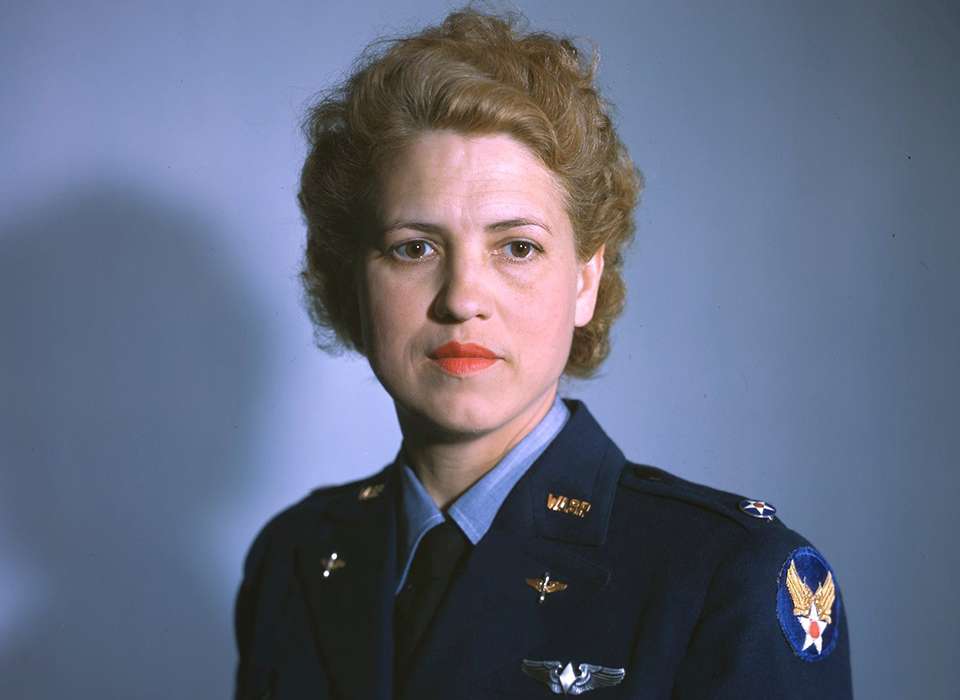
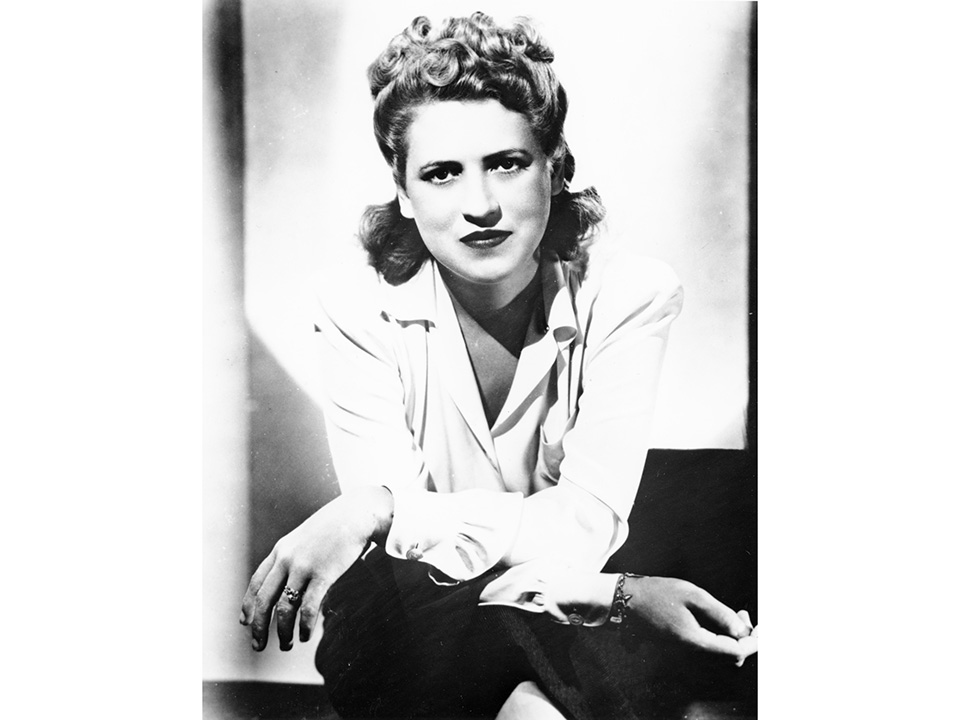
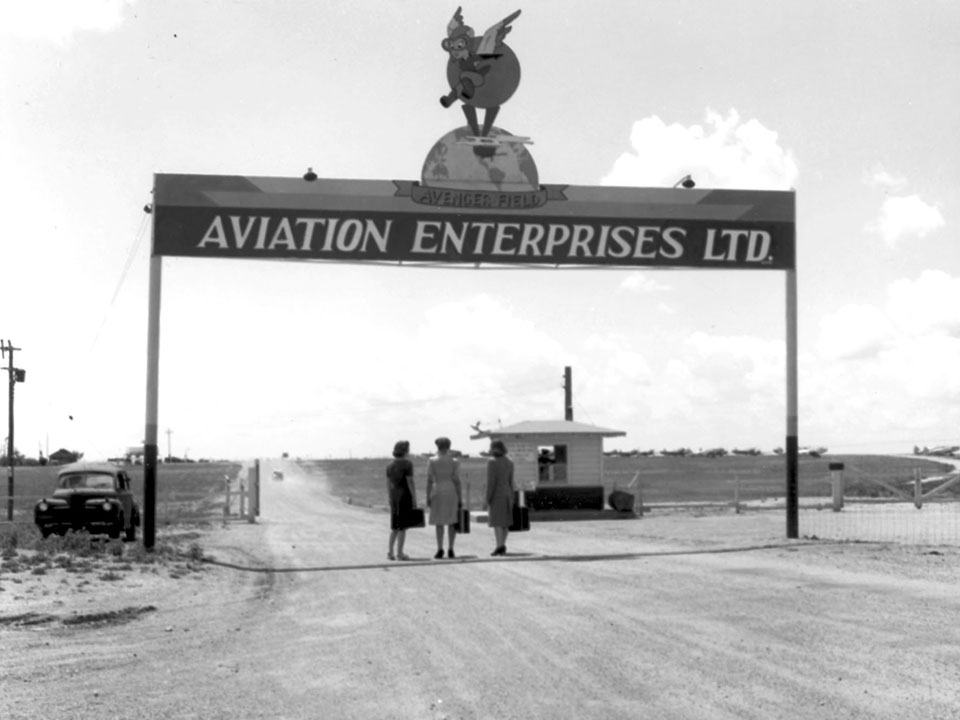
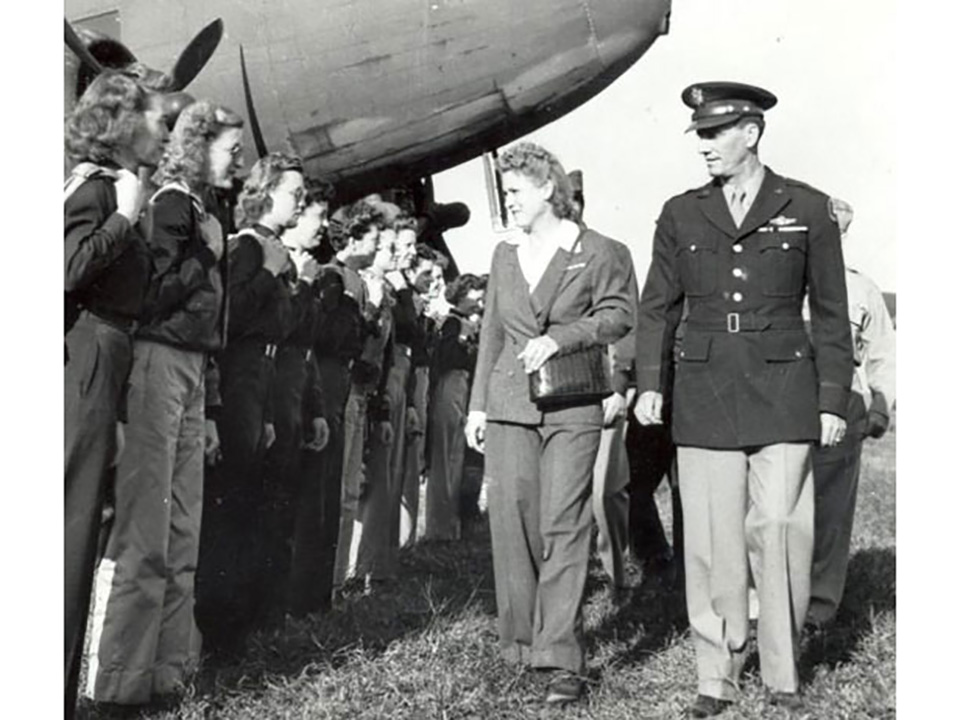
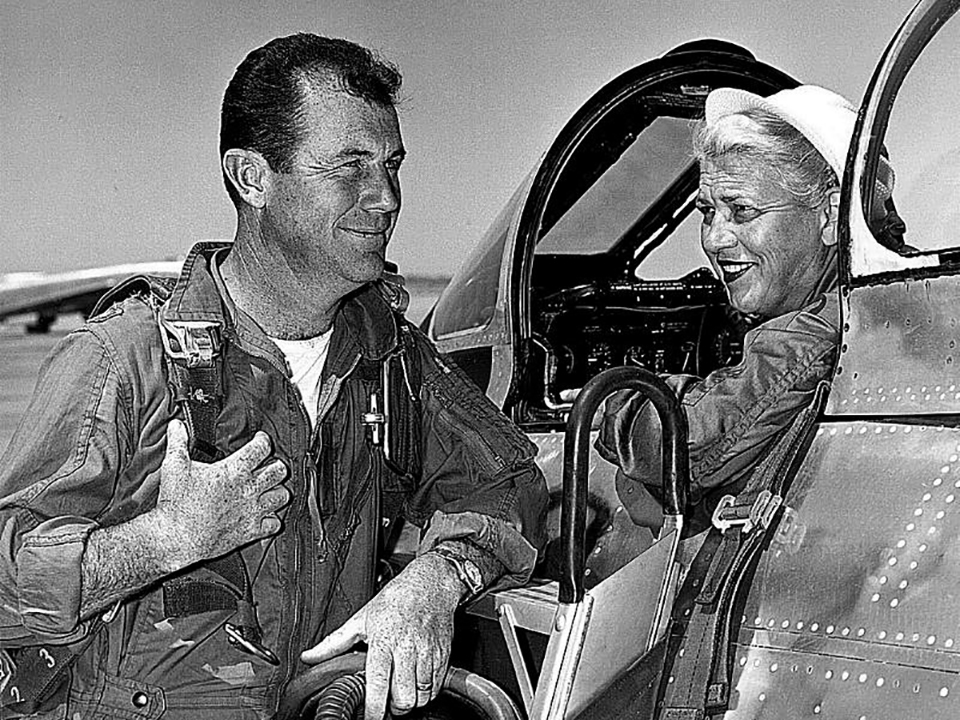
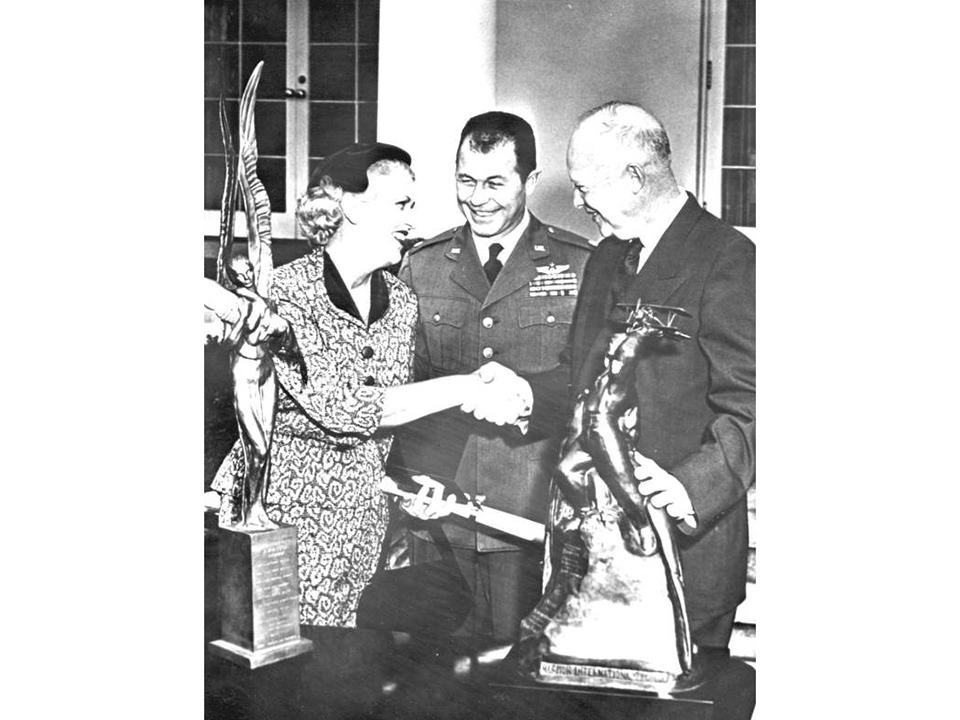
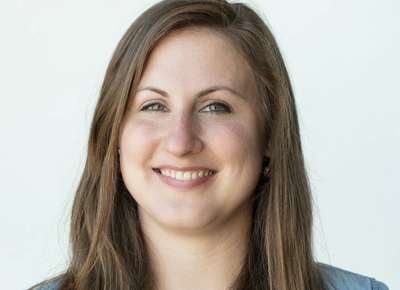
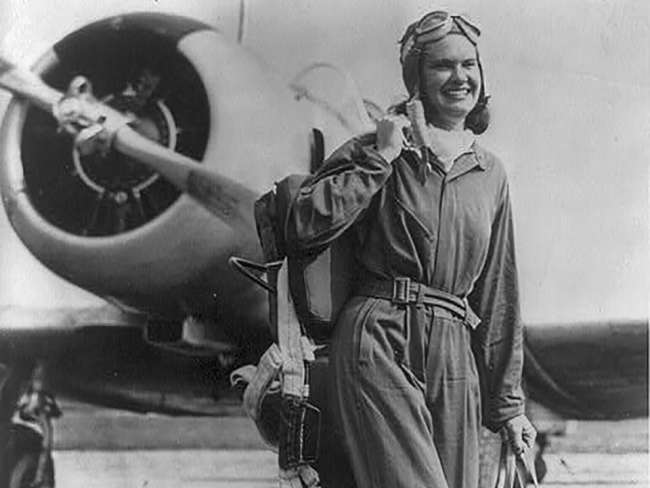




![Max Fuchs, New York City cantor, sings as Rabbi Sydney [sic] Lefkowitz, Richmond, VA, conducts the first Jewish services from Germany.](/sites/default/files/styles/max_650x650/public/2025-10/image1.jpg)


